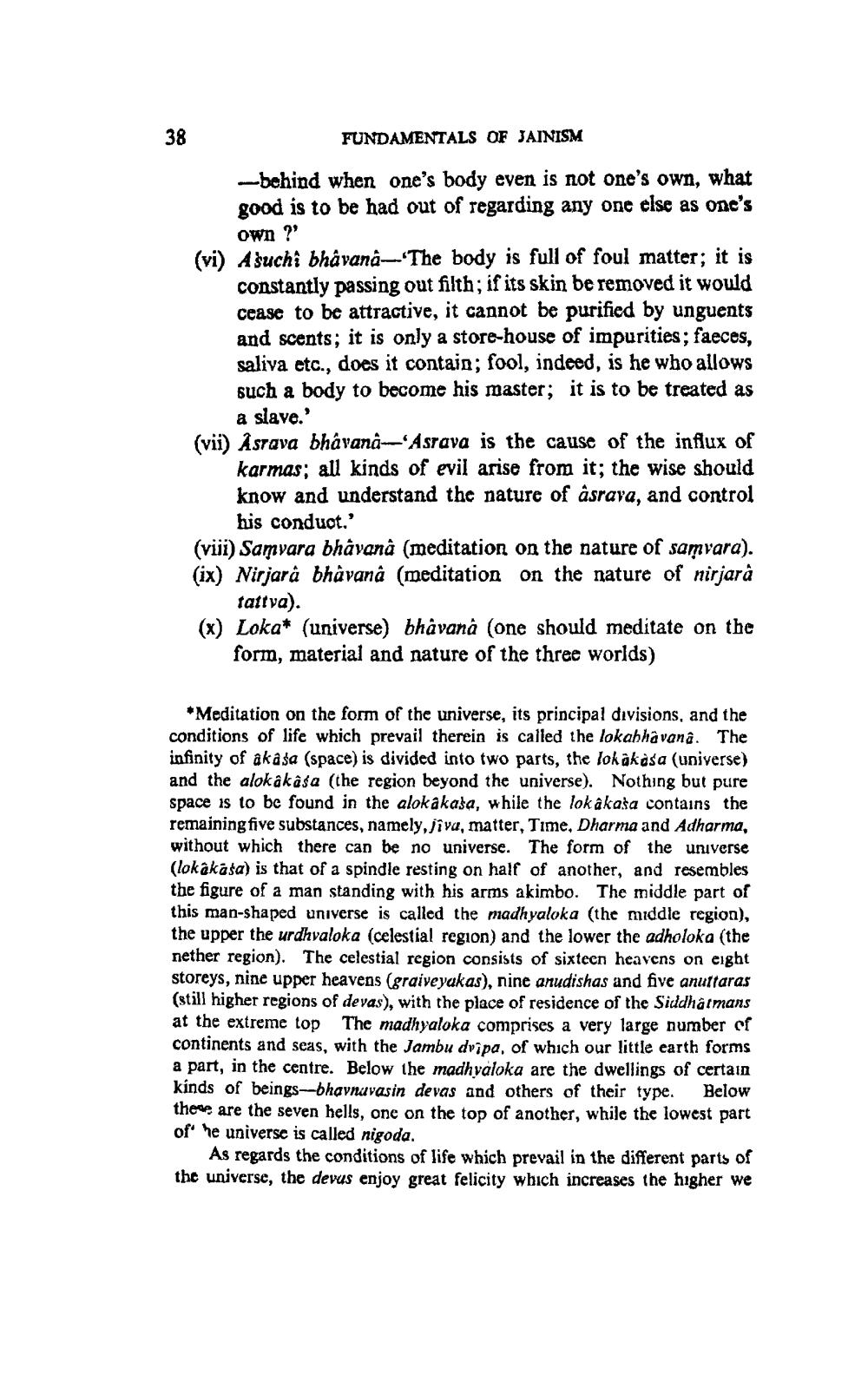________________
38
FUNDAMENTALS OF JAINISM
--behind when one's body even is not one's own, what good is to be had out of regarding any one else as one's
own ?! (vi) Ašuchi bhavana-The body is full of foul matter; it is
constantly passing out filth; if its skin be removed it would cease to be attractive, it cannot be purified by unguents and scents; it is only a store-house of impurities; faeces, saliva etc., does it contain; fool, indeed, is he who allows such a body to become his master; it is to be treated as
a slave. (vii) Asrava bhavana--Asrava is the cause of the influx of
karmas; all kinds of evil arise from it; the wise should know and understand the nature of asraya, and control
his conduot.' (viii) Samvara bhavana (meditation on the nature of samvara). (ix) Nirjarà bhāvana (meditation on the nature of nirjarà
tattva). (x) Loka* (universe) bhavana (one should meditate on the
form, material and nature of the three worlds)
*Meditation on the form of the universe, its principal divisions, and the conditions of life which prevail therein is called the lokabhāvana. The infinity of akasa (space) is divided into two parts, the lokākasa (universe) and the alokâkasa (the region beyond the universe). Nothing but pure space is to be found in the alokakata, while the lokakasa contains the remaining five substances, namely,jiva, matter, Time, Dharma and Adharma, without which there can be no universe. The form of the universe (lokakasa) is that of a spindle resting on half of another, and resembles the figure of a man standing with his arms akimbo. The middle part of this man-shaped universe is called the madhyaloka (the middle region), the upper the urdhvaloka (celestial region) and the lower the adholoka (the nether region). The celestial region consists of sixteen heavens on eight storeys, nine upper heavens (graiveyakas), nine arudishas and five anuttaras (still higher regions of devas), with the place of residence of the Siddhâtmans at the extreme top The madhyaloka comprises a very large number of continents and seas, with the Jambu dvipa, of which our little earth forms a part, in the centre. Below the madhvaloka are the dwellings of certain kinds of beings--bhavnavasin devas and others of their type. Below these are the seven hells, one on the top of another, while the lowest part of' he universe is called nigoda.
As regards the conditions of life which prevail in the different parts of the universe, the devus enjoy great felicity which increases the higher we




